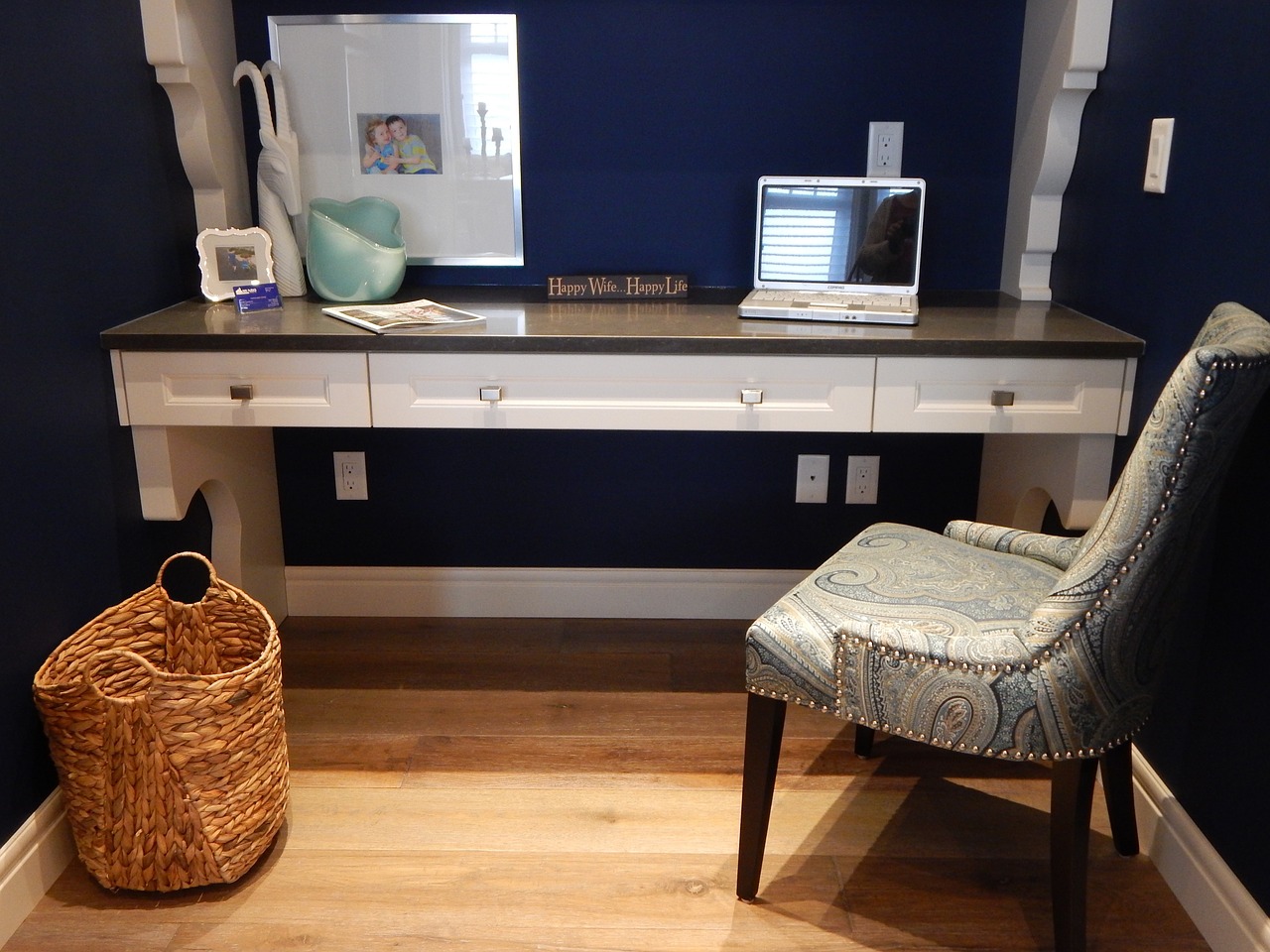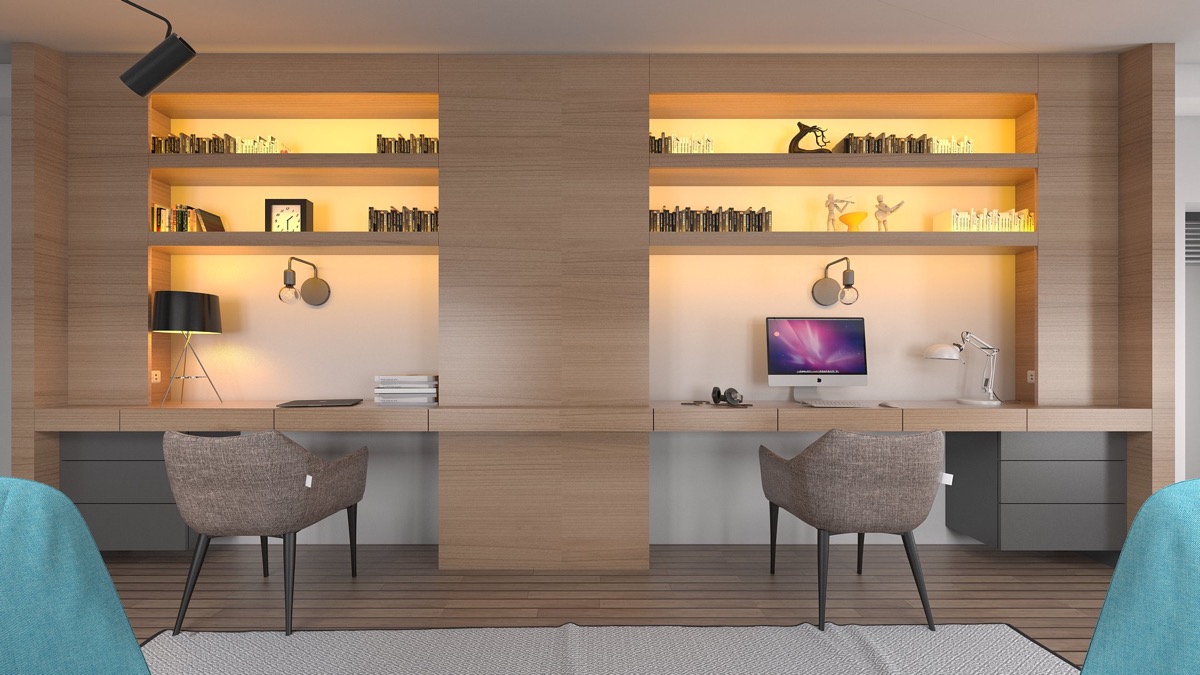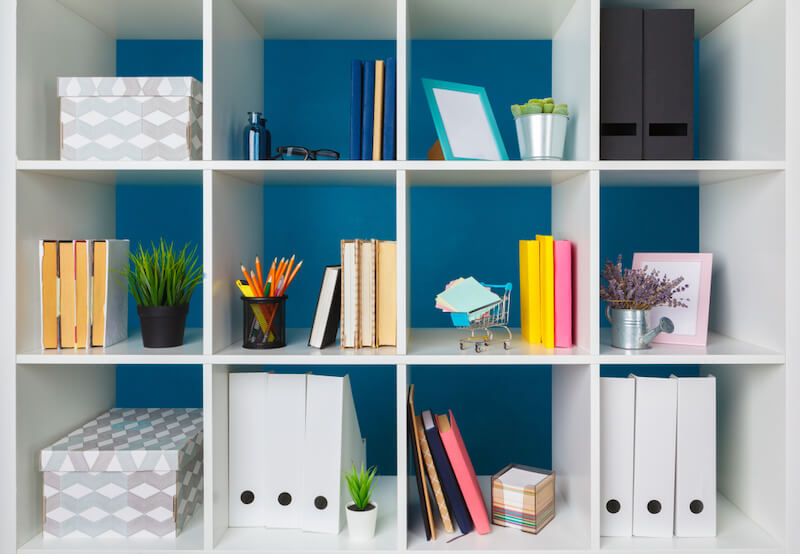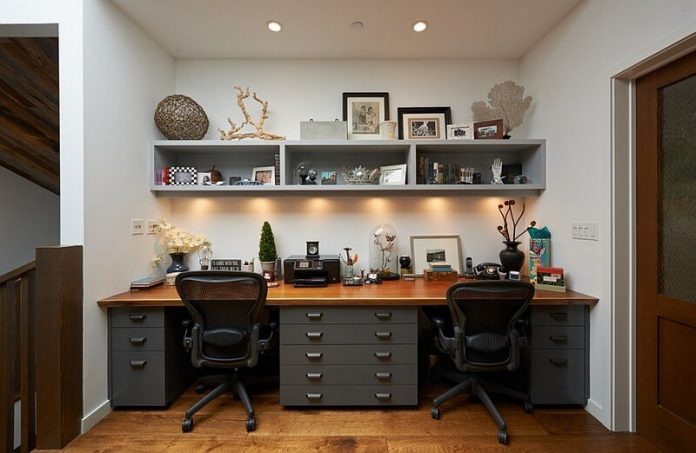As we know There are lots of advantages working from home, since it takes less than 30-second commuting time. And while many people think working from home means you can work on the couch, in the backyard, or even from your bed, in the end, you find out that you’re most productive at home when you work at a “proper” workstation, the kind with a desk and a chair.
Setting up your home office means you have lot of choice and freedom. If you want a blue and orange chair? Go for it! Want striped walls? That’s fine too. But, no matter how you decorate, furnish, or set up your home office, here are some tips that will help you create a space that contributes to your work-from-home success.

Find the Best Location
For some people, choosing a spot for their home office is easy. They already have an empty room that can be used as dedicated office space. It can be an actual office, but many people use an empty bedroom or even the basement. However, not everyone has that kind of free space in their home. When space is tight, you must think creatively.
You can always use part of the dining table as your office space if you don’t mind packing up your office before every meal. But resetting your office after every meal may seem stressful to you. In that case, you may have to think about using what space you do have creatively
Consider Who Else Uses the Space

As you set up your home office, consider who else will use it and pick the space and furniture accordingly. Will the kids also use the office for homework, and will your partner work from home, too? Consider a partner desk setup where two people can work at the same desk at the same time. Are clients stopping by? While you could meet with them in the living room, that may not always be the best choice. Make sure you add seating and table space for clients, too.
Invest in Yourself
Investing in a home office setup is, in many ways, an investment in yourself. You want to create a professional environment where you will be productive and comfortable. But, like a lot of investments, you get what you pay for. And while it may be tempting to buy the “bargain” office furniture, don’t forget about what that bargain price gets you. If you’re working in your home office 40 hours a week, make sure you consider quality and not price The cheapest desk won’t save you any money in the long run if you have to replace it in a year or two.
Prioritize Comfort

It can be tempting to just grab a chair from the dining area when you’re working from home. But sitting at a desk for long hours without proper support for your back is a fast track to posture problems. Ergonomic office chairs offer the correct support when you’re sitting for long hours. Just like the rest of your home office furniture, investing in a supportive chair is an investment in yourself.
home office workers should look for the following features in an ergonomic chair:
Height adjustable
360-degree swivel base
Adjustable backrest and armrest
Adjustable seat depth
Built-in lumbar support
Privacy
If you’re fortunate enough to have a dedicated room for your office, that room probably has walls that go all the way from the floor to the ceiling and solid doors that close. That makes privacy and quiet easy to come by. But when your office is in, say, the corner of your bedroom, you might find it hard to separate work from home.
Consider adding a privacy divider to your home office setup. You can get traditional dividers that sit on the floor. Or you could hang a curtain from the ceiling or on a rod. Curtains are a lightweight and generally inexpensive method of closing the door to your office. And, with a curtain, you can choose something subtle that blends in with the rest of the decor.
Support Your Neck and Eyes
Don’t forget to help your neck and eyes, too. Make sure you’ve got your monitor in the “perfect” spot. That spot is different for every person, so you’ll have to experiment with placement. Follow some of these tips to help you get it right:
- Your spine should always stay in a neutral position.
- The top of the screen should be at or slightly below eye level.
- Place the monitor at least 20 inches from your eyes, farther away if you’ve got a large monitor.
Your eyes should look slightly down when looking at the middle of the screen to help keep your neck in proper alignment. Tilt the monitor back 10 to 20 degrees to ensure you’re looking down on the screen at an angle. If you wear bifocals, tip the screen back to between 30 and 45 degrees to ensure you’re not tilting your head back to focus. Most monitors are adjustable. But, sometimes that’s not enough, so you may need to invest in a screen riser to get the right adjustment. Or, in a pinch, some books or an old box can also do the trick.
Put things Away

When you think about the supplies you need for remote work, we often picture a laptop…and not much else. But, depending on your job, you will likely have at least some papers, pens, and other office supplies floating around. And yes, even some paper files to maintain.
Dedicated storage options aren’t just good for the rest of your household items. They can also be used in your home office to house files, papers, stationery, and more. It doesn’t have to be large filing cabinets or huge desks and drawers. A simple cubby system with small bins could work. So could plastic storage tubs if you need to pack up your office at the end of the day. Even if you just clear a small area in an existing shelving unit and dedicate it to work items, you’ll immediately feel more organized.
Protect Sensitive & Important Documents
Shelves and cubbies aren’t the right solutions for all your storage needs, though. Sometimes there are sensitive documents that you can’t leave lying around the office especially if it’s in a shared space. invest in lockable file and storage cabinets, when there are things you just don’t want to risk losing.
Tame the Wires
Wi-Fi is everywhere, but that doesn’t mean you won’t have a lot of cords in your office. Even your mobile devices are plugged in to recharge sometimes. Your home office is the one place you can count on cords, cords, and more cords.
Invest in cord management system. This can be as simple as a twist tie, or something a little more elegant, but make sure that whatever you get, you use it. Also, when your office is in a dedicated but public spot, think about where the outlets are when you’re setting up shop. You may not have a lot of options and find you have to run power strips and extension cords across the floor. When that’s the case, make sure you find a way to do it safely.
Lighting

Lighting is usually overlooked when setting up a home office. Most work is done on computers, and since monitors and even keyboards light up, people don’t see the need to bother.
While poor lighting in your office won’t cause blindness, it will cause you to strain your eyes. Over time, that eye strain can cause headaches, making you a less productive employee.
Set up your home office where you get as much natural light as possible. It can help you feel good and may even boost your productivity. If nothing else, using natural light to light up your office is better for the environment.
When natural light isn’t possible, or you just need more light, invest in the right kinds of lamps. While you may think overhead, lighting is the way to go, they can create a glare on your screen or desk, making it hard for you to see., sometimes a task lamp helps you shine a light right where you need it. Look for a task lamp with a solid shade that can point the light directly at your desk for when you need it. Indirect light, though, may be your better lighting choice. Indirect lights have lamp shades or diffusers that soften the light, creating less glare and making it easier on your eyes. Just make sure the light isn’t too diffused; otherwise, you may not be able to see what you’re doing


